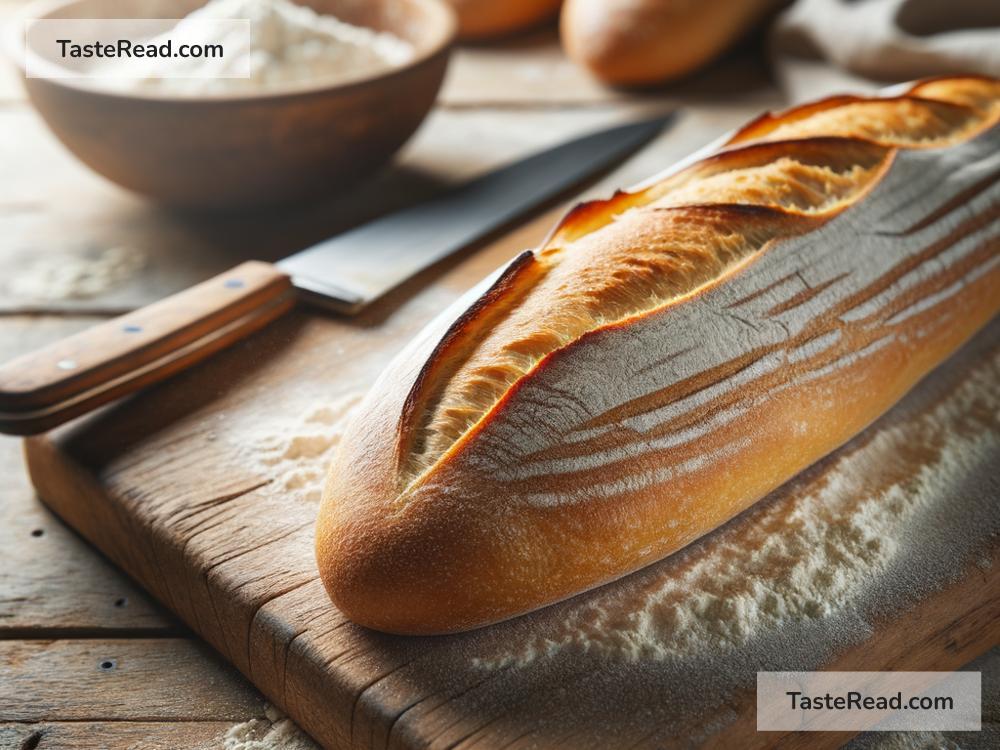How to Prepare a Traditional French Baguette
The French baguette is a true symbol of France, loved by people all over the world. Its long and slender shape, crispy golden crust, and soft airy center make it one of the most delicious breads you’ll ever taste. The good news is you can make a traditional French baguette at home with just a few simple ingredients and some patience. In this blog post, we’ll walk you through the steps to prepare a classic French baguette in simple English.
Ingredients:
To make a traditional French baguette, you only need four basic ingredients:
1. Flour: 500 grams (use bread flour for best results)
2. Water: 350 milliliters (room temperature)
3. Salt: 10 grams
4. Dry Yeast: 2 grams
These ingredients are humble and straightforward, but together, they create magic!
Step 1: Mixing the Dough
Start by combining the flour, salt, and dry yeast in a large mixing bowl. Make sure the salt and yeast don’t directly touch each other, as salt can weaken the yeast. Gradually pour in the water while mixing with your hands or a wooden spoon.
Keep mixing until all the ingredients come together to form a sticky dough. Don’t worry if the dough feels wet—it will firm up as you proceed.
Step 2: Kneading the Dough
Transfer the dough onto a clean countertop or flat surface lightly dusted with flour. Knead the dough for about 8–10 minutes until it becomes smooth and elastic.
To knead, press the dough away from you with the heel of your hand, fold it in half, and turn it slightly. Repeat this process rhythmically. Kneading activates the gluten in the flour, which helps create the baguette’s chewy texture.
Step 3: First Rise
After kneading, place the dough in a lightly oiled bowl and cover it with a clean kitchen towel or plastic wrap. Let it rise at room temperature for 1–2 hours, or until it doubles in size.
This rise (also called proofing) allows the yeast to work, filling the dough with air bubbles. These bubbles are what give the baguette its airy interior.
Step 4: Shaping the Baguettes
Once the dough has risen, gently punch it down to release some of the excess air. Divide the dough into 2 or 3 equal portions, depending on how many baguettes you want to make.
Shaping baguettes requires a bit of practice, but here’s a simple method:
1. Flatten each portion of dough into a rough rectangle.
2. Fold the dough lengthwise into thirds, like you’re folding a letter.
3. Seal the edges with your fingers and roll the dough lightly to form a long, slender baguette shape.
Place the shaped baguettes on a baking tray lined with parchment paper. Leave enough space between them to prevent sticking.
Step 5: Second Rise
Cover the shaped baguettes with the kitchen towel again and let them rise for another 45–60 minutes. This second rise is essential for achieving the right texture and volume.
During this time, preheat your oven to 220°C (425°F).
Step 6: Scoring the Baguettes
Before baking, take a sharp knife or razor blade and make diagonal cuts on the top of each baguette. These cuts aren’t just decorative—they allow the bread to expand evenly in the oven and give it that signature baguette look.
Step 7: Baking the Baguettes
To create a crispy crust, place a small oven-safe dish with hot water at the bottom of your oven. The steam generated will help make the crust beautifully golden and crunchy.
Place the baguettes in the preheated oven and bake for about 20–25 minutes, or until the baguettes turn a deep golden color. The smell of freshly baked bread will fill your kitchen—it’s truly delightful!
Step 8: Cooling and Enjoying
Once baked, remove the baguettes from the oven and let them cool on a wire rack. Cooling allows the crust to firm up and enhances the flavor.
French baguettes are best enjoyed fresh. Slice them up and serve with butter, cheese, or your favorite spread. They’re also perfect for sandwiches or alongside soups and salads.
Tips for Success:
- Use quality ingredients: Since the recipe is simple, the quality of the flour and yeast makes a big difference.
- Don’t rush the process: Good baguettes take time. Allow the dough to rise properly for the best flavor and texture.
- Practice makes perfect: Shaping baguettes can take a few tries, but don’t give up—you’ll get better each time!
Conclusion
Making a traditional French baguette at home is easier than you might think. With a little effort, you can enjoy one of France’s most iconic breads straight from your own oven. Whether you’re hosting friends or treating yourself to a delicious snack, a homemade baguette will always impress.
So roll up your sleeves, get baking, and bring a touch of French charm to your kitchen. Bon appétit!


